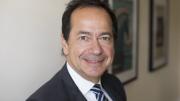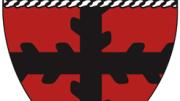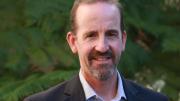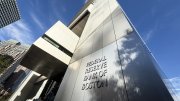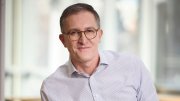John A. Paulson, M.B.A. ’80, has given a $400-million endowment gift to Harvard’s School of Engineering and Applied Sciences (SEAS)—the largest in University history, and the second enormous endowment gift, which bears naming rights, to a Harvard school this year.
Engineering and Applied Sciences: The Harvard Context
The University announcement quotes Paulson as intending the gift to “mak[e] SEAS a twenty-first-century engineering leader. It provides a solid endowment for faculty development, research, scholarships, and financial aid,” suggesting that the gift provides valuable flexibility for use across the school’s needs. The University confirms that the gift is in the form of unrestricted endowment, enabling the school to apply distributions to its highest priorities as they evolve.
This is, in a sense, the second time lightning has struck Harvard—in the best sense of the word—this academic year, one of continuing gains for the $6.5-billion Harvard Campaign. Last September, just as classes began, Harvard School of Public Health was the beneficiary of a $350-million gift of unrestricted endowment funds from The Morningside Foundation, in honor of the late T.H. Chan (for whom the school has been named). Given the public-health faculty’s heavy dependence on sponsored-research funding, its relatively small endowment ($1.25 billion as of June 30, 2014), and the relatively low incomes earned by public-health professionals, the gift was seen as transformational for the entire school.
SEAS graduates in some cases accumulate very significant wealth, as founders or leaders of companies (Microsoft’s former CEO, Steve Ballmer ’77, who studied applied mathematics as an undergraduate, last November made a gift to underwrite a 50 percent expansion of Harvard’s computer-sciences faculty, to the tune of an estimated $60 million to $75 million). But SEAS is the focus of concerted fundraising attention because:
- Student enrollment is burgeoning (from as few as 292 undergraduate concentrators in academic year 2007-2008, when SEAS was formally launched as a freestanding school within the Faculty of Arts and Sciences [FAS], to 775 in 2013-2014, with commensurate growth in graduate-student interest and gains in graduate-student acceptance of offers of admission).
- Academic research is gaining momentum in fields such as computer science, computational science, and bioengineering (within SEAS, the Wyss Institute, and Harvard Medical School, and elsewhere).
- An integrated SEAS facility—set as a Harvard priority in early 2013—is perceived as the academic anchor for University growth in Allston. When built, by the end of the decade, it will house a significant portion of the SEAS faculty, which is now dispersed among many separate buildings. There, it will be in close proximity to Harvard Business School (HBS), the Harvard Innovation Lab, and other units likely to be based at an academic building scheduled to rise soon at the corner of North Harvard Street and Western Avenue.
In light of these priorities, SEAS was made a very high priority for the capital campaign. As FAS dean Michael D. Smith noted in launching its $2.5-billion part of the larger capital campaign, about one-fifth of that total would go to SEAS, which then accounted for about one-tenth of FAS’s ladder faculty members overall. Among explicit campaign objectives were:
- increasing the ladder-faculty ranks from 70 positions to 90 (larger growth in positions than spelled out for the rest of FAS combined), plus endowing another 10 positions;
- funds for teaching support;
- start-up research and innovation funds in new fields and for newly hired faculty members; and
- funding graduate-student fellowships.
SEAS would also benefit from FAS’s fundraising for undergraduate financial aid, and for investments in teaching innovation and enhanced pedagogy. The funding for the Allston facility—a naming gift in the range of at least a few hundred million dollars is believed to be the goal—is a separate University priority, atop the SEAS funds within the FAS campaign.
The financial rationale is similar to the case made for the public-health school. Although SEAS derived 35 percent of its operating revenue from distributions from its endowment in the fiscal year ended June 30, 2014 (in line with the University as a whole, and compared to just 14 percent at the public-health school), its endowment then was just $1.07 billion, according to the 2014 University financial report; SEAS reports a slightly lower endowment value as of last fall. (Writing in 2007, Harry R. Lewis, Gordon McKay professor of computer science, and now interim dean of SEAS, explained the gift from shoe-machinery magnate Gordon McKay that has heretofore endowed most of the school’s professorships, fellowships, and finances generally.)
That $1-billion endowment is not a great deal for a research- and facilities-intensive operation that was then deriving 40 percent of its revenue from student income and sponsored-research support (also in line with University averages), while grappling with the significant expenses of expanding its faculty ranks, equipping laboratories, and competing hard for research funding as the federal budget remains constrained. Because Harvard did not undertake a capital campaign in the first decade of this century, SEAS has not had the opportunity, as a separate school, to bolster its endowment in a concerted way. By making SEAS such a high priority, The Harvard Campaign meant to address that in a significant, focused way, at a time of growing student and faculty interest in engineering and applied sciences generally.
For a school that a few years ago (the latest figure available) had an annual operating budget of about $100 million, the income received from distributions on an additional endowment of the size of the Paulson gift—$20 million or so annually, when the gift is credited, and growing if the endowment assets appreciate—would obviously be hugely significant. And at a time when it is trying to hire computer scientists, with the Ballmer support, any kind of support for starting up new professors’ work will be essential: The Harvard Crimson reported $100,000-plus annual salaries for 2015 College graduates in computer science—tough competition versus academic pay packages, in an environment when start-ups like Uber are raiding universities for talent and can offer equity incentives. And of course a landmark gift like this has reputational value to any recipient as it vies to attract students and recruit faculty members.
As of last December 31, the campaign overall reported gifts and pledges of $5 billion, a sum that excludes this commitment and year-end and reunion gifts, suggesting that the forthcoming June 30 total, when released, will easily exceed $5.5 billion, or 85 percent of the total goal. The Chan and Paulson gifts alone total more than 11.5 percent of that goal, underscoring the importance of donors who have the capacity to make huge commitments—and the interest in doing so on Harvard’s behalf.
The Donor and the Gift
John Paulson in 1994 founded and is president of a hedge fund, Paulson & Co., which reported $19.3 billion in assets under management as of March 1; it has been the source of his reported multibillion-dollar fortune. According to the firm’s website, it focuses on “event-driven arbitrage strategies, including merger arbitrage, bankruptcy reorganizations and distressed credit, structured credit, recapitalizations, restructurings, and other corporate events.” That can be a volatile way to invest, but the returns are potentially enormous—most famously in the case of Paulson’s prescient, and nearly solitary, 2006-2007 intuition that the U.S. housing market was overheated and headed for a sharp decline: betting against the housing and subprime-mortgage markets, his firm earned a reported $15 billion. The strategy has even been the subject of a book, The Greatest Trade Ever: The Behind-the-Scenes Story of How John Paulson Defied Wall Street and Made Financial History, by Gregory Zuckerman.
In 2012, Paulson made a $100-millon gift to the Central Park Conservancy, in Manhattan, where he and his family live; then, it was reported that he had made gifts of $20 million to New York University, his undergraduate alma mater, and $15 million to build a maternity hospital in Ecuador, where his father was born.
According to his company biographical statement, Paulson is a trustee of New York University and of the Central Park Conservancy. It also lists him as a director of the 92nd Street Y, a member of the Chairman’s Circle at the Metropolitan Museum of Art—and on the HBS Dean’s Advisory Board. In a brief conversation at Massachusetts Hall, Paulson noted that he had established an M.B.A.-student scholarship fund at HBS (described here, for his thirtieth HBS reunion), and endowed a faculty chair (now held by Erik Stafford). (Updated 11:30 a.m.: According to HBS, 311 M.B.A. students have been beneficiaries since the scholarship fund was established in 2010.) But he has remained, until today, a relatively quiet presence at Harvard (he barely registers in a search of HBS’s website), and beyond.
Although he may have made other significant gifts, his $400-million commitment to SEAS is clearly an “event-driven” philanthropic act of a different order. "In meeting with [HBS dean] Nitin Nohria and President Drew Faust," Paulson said, "it was clear to me that one of Harvard's priorities was in establishing the SEAS as a twenty-first-century leader in engineering" and to establish Allston as "a center of innovation in the sciences, engineering, and math." His decision to make the gift, he said, was driven by his desire "to help Harvard in the area that Harvard needed the help." He noted the close links between business and technology in the contemporary world, "a reason to have a close cooperation and coordination in the future between SEAS and the business school."
So far as is known, Paulson has not had significant attachments, or perhaps any, to engineering and applied science research generally, or to SEAS. (He confirmed that he would meet the school leaderhip, and FAS leadership, later today.) If that is the case, this gift may reflect both the galvanizing effect, on donors of enormous means, of an enormous capital campaign, and the exemplary University citizenship of HBS dean Nitin Nohria and his colleagues. The latter may have perceived an opportunity to secure a landmark gift, beyond what HBS might want for its own facilities, faculty expansion, and so on, that would accelerate Allston development across the street from their campus and the potential for HBS-SEAS partnerships—a subject about which Nohria has spoken with special enthusiasm. In the news announcement, Nohria said, “John is the epitome of a visionary leader. He understands that this gift will be the cornerstone for a Harvard campus in Allston where multiple disciplines can converge and combine their passion for knowledge, unleashing discovery in ways that truly benefit society and the world.”
In the University statement, President Drew Faust said:
John Paulson’s extraordinary gift will enable the growth and ensure the strength of engineering and applied sciences at Harvard for the benefit of generations to come. His appreciation of the importance of SEAS to faculty, students, and schools across the University has motivated a historic act of generosity that will change Harvard and enhance our impact on the world beyond.
Paulson said:
SEAS is the next frontier for Harvard, and its expanding campus in Allston promises to become the next major center of innovation. As an alumnus of Harvard, one who has benefited greatly from the education I received here, it is both a privilege and an honor to support this endeavor.
FAS dean Smith said:
There is no easy formula for innovation, in both the physical and digital worlds—in both atoms and bits—but SEAS accomplishes both.…SEAS demonstrates what’s possible when you combine a world-class research and teaching environment with a fundamental commitment to the liberal arts. That’s engineering at Harvard. That’s what this gift will multiply.
SEAS interim dean Lewis said:
SEAS has a rich history of extraordinary discovery and innovative teaching. This visionary gift will enable our faculty, researchers, and students to build on that legacy and fulfill our potential to become one of the world’s premier engineering and applied sciences programs.
The Gift in Context
The gift names both SEAS—it will now be the Harvard John A. Paulson School of Engineering and Applied Sciences, following the public-health precedent—and, separately, the SEAS deanship, according to the University announcement (much as the FAS deanship and Harvard College deanship have been named in honor of significant gifts during the campaign). Although details were not provided, the separate naming suggests that the gift may be structured in two parts: the majority, for unrestricted academic use by the school; and a small part dedicated to the expenses of the deanship proper (the financial benefits from which may accrue to SEAS or to its FAS parent). The inaugural Paulson dean will be SEAS’s dean-designate, Francis J. Doyle III, whose appointment was announced shortly before Commencement, and takes effect on August 1.
He and his new colleagues will obviously benefit enormously from Paulson’s record-setting generosity, too—the announcement of which apparently coincides with Doyle’s planned initial meeting on campus with the SEAS faculty. In the transition from former dean Cherry Murray to interim dean Lewis (who made no secret about his fundraising efforts in a recent interview with The Harvard Crimson) and now to a successor dean, the SEAS campaign might have lost some momentum. If so, that was rectified today.
Because the gift is unrestricted, it may, in the long run, prove even more valuable to SEAS than a naming gift for the new Allston facilities. "I wanted to give Harvard the flexibility to use the proceeds where they think best," Paulson said. "I have complete confidence that they will make the right decisions, better than I could." No matter how energetically fundraisers have sought such a building gift, absent off-the-charts generosity it remains likely that the University will have to borrow some funds to proceed with construction. An endowment, on the other hand, is both a perpetual source of funding and, given the unrestricted terms, a source of the dollars needed to pay overhead for new faculty members, to finance flexible and start-up research costs, and so on—the very needs that a building gift simply does not offset. Moreover, this eye-opening gift from John Paulson makes such a significant statement about SEAS and its ambitions (even after its anticipated growth, it will be smaller than comparable schools at Princeton, Caltech, and elsewhere) that it may encourage gifts for SEAS’s Allston facilities, too. If it does, and on a scale to match, SEAS—not even recognized as a school within Harvard eight years ago—will emerge from this campaign on an entirely different plane.
